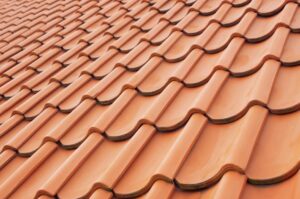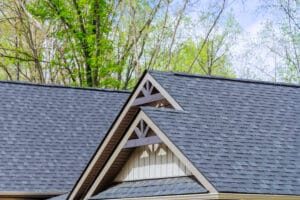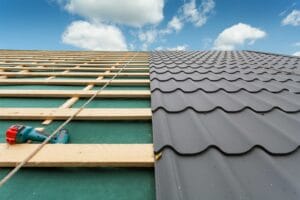
Choosing the Right Roofing Materials
When it comes to selecting roofing materials, there are several factors you need to consider. From understanding different types of materials to evaluating their longevity and durability, each aspect plays a crucial role in making an informed decision. Additionally, you should also consider the climate and weather conditions in your area, as well as the cost and budget constraints. Lastly, the aesthetics and curb appeal of the roofing materials will also contribute to the overall appearance of your home. To navigate through this decision-making process, consulting with roofing professionals can provide valuable insights and guidance.
Understanding Different Roofing Materials
Before delving deeper into the specifics of various roofing materials, it’s essential to have a basic understanding of the options available. From traditional asphalt shingles to modern metal roofing and environmentally friendly green roofs, each material comes with its own set of advantages and limitations. By familiarizing yourself with these options, you can narrow down your choices and select the most suitable roofing materials for your needs.
Considering Climate and Weather
One of the key factors to consider when choosing roofing materials is the climate and weather conditions in your area. Different materials perform differently under various climates. For instance, asphalt shingles are popular in areas with moderate climates, while metal roofing is known for its durability in areas prone to extreme weather conditions such as hailstorms or heavy snowfall. By selecting materials that are best suited for your local climate, you can ensure the longevity and efficiency of your roof.
Evaluating Longevity and Durability
Roofing materials vary in terms of their lifespan and durability. It’s crucial to select materials that can withstand the elements and offer long-term protection for your home. Asphalt shingles typically have a lifespan of 20-30 years, while metal roofing can last up to 50 years or more. Concrete tiles, slate roofing, and clay tiles are also known for their durability, with lifespans ranging from 50 to over 100 years. Understanding the longevity and durability of each material will help you make an informed decision based on your long-term roofing needs.
Comparing Cost and Budget
The cost of roofing materials can vary significantly depending on the type and quality. Whether you are working within a specific budget or considering the long-term investment value, cost plays a crucial role in selecting the right roofing materials. Asphalt shingles are generally the most affordable option, making them popular among homeowners. Metal roofing, concrete tiles, slate roofing, and clay tiles tend to be more expensive but offer superior durability and longevity. It’s important to weigh the upfront cost against the long-term benefits to make the best decision for your budget.
Examining Aesthetics and Curb Appeal
The aesthetic appeal of your roof can greatly impact the overall look and curb appeal of your home. Each roofing material has its own unique style and appearance, allowing you to choose one that complements the architectural design and enhances the beauty of your property. Asphalt shingles come in a wide range of colors and styles, offering versatility and easy customization. Metal roofing provides a sleek and modern look, while concrete tiles, slate roofing, clay tiles, wood shakes, and shingles bring a touch of elegance and sophistication. Considering the aesthetics and curb appeal will help you create a cohesive and visually appealing exterior for your home.
Consulting with Roofing Professionals
Selecting the right roofing materials is a complex decision that requires careful consideration of multiple factors. To ensure you make the best choice for your home, it is highly recommended to consult with roofing professionals. They have the expertise and knowledge to assess your specific needs, assess the climate, and recommend suitable materials. Roofing professionals can also provide valuable insights into the installation and maintenance requirements of different materials, guiding you towards the most suitable option for your home.
Understanding the Importance of Leak Prevention
Leak prevention is a critical aspect of maintaining a structurally sound and watertight roof. Understanding the common causes of roof leaks, recognizing potential damage and risks, and realizing the impacts of unaddressed leaks are important considerations for every homeowner.
Identifying Common Causes of Roof Leaks
Roof leaks can occur due to various factors. Some of the common causes include:
- Damaged or missing shingles: Wear and tear, storm damage, or poor installation can lead to shingles becoming damaged or dislodged, creating openings for water to penetrate.
- Improper flashing: Flashing is used to seal joints and prevent water infiltration in vulnerable areas such as chimneys, vents, and skylights. If flashing is not properly installed or maintained, it can lead to leaks.
- Clogged gutters and downspouts: When gutters and downspouts are clogged with leaves, debris, or ice, water can accumulate and overflow onto the roof, causing leaks.
- Condensation: Poor ventilation in the attic can lead to condensation buildup, which can result in leaks and moisture damage.
- Roofing membrane damage: Torn or punctured roofing membranes, commonly used in flat roofs, can allow water to seep in and cause leaks.
By identifying these common causes of roof leaks, you can be proactive in addressing potential issues and preventing water damage to your home.
Recognizing Potential Damage and Risks
Unaddressed roof leaks can lead to significant damage and risks for your home. Some of the potential consequences include:
- Structural damage: The continuous exposure to water can deteriorate the structural integrity of your roof, leading to sagging, rot, and even collapse in severe cases.
- Mold and mildew growth: Moisture from roof leaks creates an ideal environment for mold and mildew to thrive, which can cause health issues and further damage to your property.
- Damage to insulation and ceilings: Water penetration through the roof can damage insulation, leading to reduced energy efficiency and increased utility costs. Additionally, ceilings and interior surfaces can become stained and compromised.
- Electrical hazards: If water infiltrates electrical components or wiring, it can pose a fire hazard, endangering the safety of your home and its occupants.
Recognizing the potential risks and damage caused by roof leaks highlights the importance of proactive leak prevention measures.
Realizing the Impacts of Unaddressed Leaks
Neglecting to address roof leaks can have severe consequences for both your home and your wallet. The longer a leak goes unnoticed or unaddressed, the more extensive the damage becomes, leading to costly repairs or even the need for a full roof replacement. Additionally, water damage can result in increased insurance premiums and decreased property value. By promptly addressing leaks and prioritizing leak prevention, you can protect your investment and preserve the integrity of your home.
Asphalt Shingles
Overview of Asphalt Shingles
Asphalt shingles are the most commonly used roofing material in North America due to their affordability, versatility, and ease of installation. They are composed of a base layer of fiberglass or organic mat coated with asphalt and mineral granules.
Advantages and Limitations
One of the major advantages of asphalt shingles is their cost-effectiveness. They are relatively inexpensive compared to other roofing materials, making them a popular choice among homeowners on a budget. Asphalt shingles are also available in a wide range of colors, styles, and textures, allowing homeowners to find an option that suits their aesthetic preferences.
However, asphalt shingles have a shorter lifespan compared to some other roofing materials. They typically last between 20 to 30 years, depending on the quality and environmental factors. Additionally, they can be prone to damage from strong winds and hail.
Installation and Maintenance Tips
Installation of asphalt shingles is relatively straightforward, making it a popular choice for both professional contractors and DIY enthusiasts. However, it is essential to follow the manufacturer’s instructions and guidelines to ensure proper installation and maximize the longevity of the shingles.
Regular maintenance is crucial to prolong the lifespan of asphalt shingles. This includes inspecting the roof for any damage or missing shingles, clearing debris from gutters and downspouts, and addressing any signs of wear or leakage promptly. Periodic professional inspections are recommended to identify and address any potential issues before they become major problems.
Choosing the Appropriate Grade
When selecting asphalt shingles, it’s important to consider the grade or quality of the product. Higher-grade shingles often come with longer warranties and enhanced durability. While they may cost more upfront, investing in a higher-grade product can provide better protection and potentially save you money in the long run.
Exploring Color and Style Options
Asphalt shingles offer a wide range of color and style options to suit different architectural styles and personal preferences. From traditional three-tab shingles to architectural shingles that mimic the look of cedar shakes or slate, there is a broad spectrum of choices available. It’s important to consider the overall aesthetic of your home and neighborhood when selecting the color and style of your asphalt shingles to ensure a visually pleasing result.



